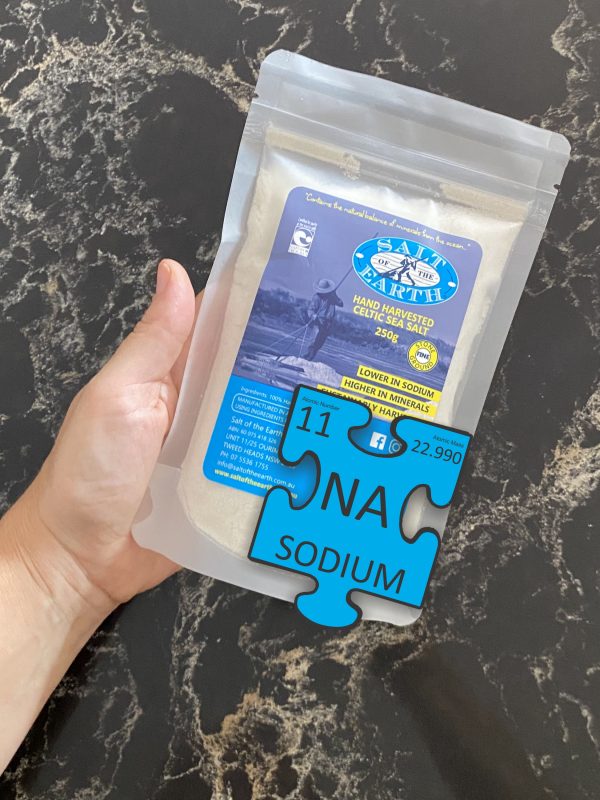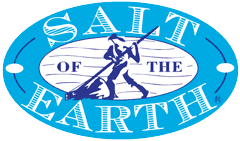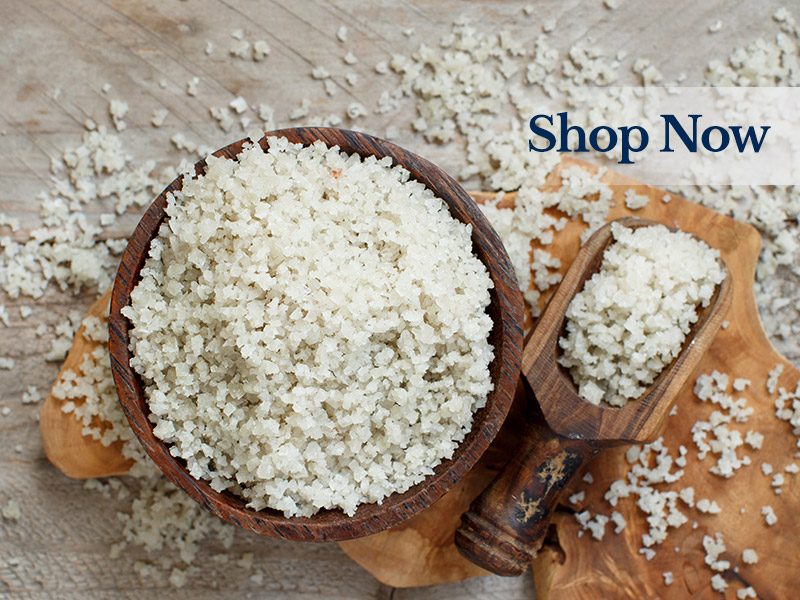Categories
Sodium – Are you getting enough?
 Sodium is an essential electrolyte that helps maintain the balance of water in and around your cells. It’s important for proper muscle and nerve function. It also helps maintain stable blood pressure levels.
Sodium is an essential electrolyte that helps maintain the balance of water in and around your cells. It’s important for proper muscle and nerve function. It also helps maintain stable blood pressure levels.
For a mineral that gets a pretty bad wrap it certainly plays an important role in the function of a healthy body. A perfect example of why sodium is such an essential mineral, when we are feeling unwell and are admitted to the hospital quite often you will be given a saline drip. This is done to supply water and salt to the body to alleviate dehydration and maintain the body’s proper balance of electrolytes in the blood.
One question I am often asked is how much Celtic Sea Salt to consume each day. It is important to keep your water and electrolyte levels in balance to help prevent low blood sodium. The tricky part is our lifestyle alters our bodies requirements and there is no set quantity for everyone. The heart foundation recommend 2000mg of sodium as the maximum daily intake. While controversially, some researchers have suggested an intake of 3,000–5,000 mg of sodium per day as considered optimal.
Salt of the Earth Celtic Sea Salt contains approximately 31% (310mg/g of Celtic Sea Salt) sodium content. Therefore taking into consideration the conservative view from the Heart Foundation, roughly 6.5 grams of Celtic Sea Salt would meet their recommend daily allowance. (1 teaspoon of Celtic Sea Salt is equivalent to 5g so just over 1 teaspoon.) The more controversial suggestion of 5,000mg per day equates to 16.13 grams of Celtic Sea Salt each day.
Factors that would increase your daily requirements from the modest Heart Foundation recommendation would be:
- Older age
- antidepressant use
- diuretic use
- living in a warmer climate
- being a high-performance athlete (drinking excessive water and not enough salt diluting your minerals)
- having heart failure, kidney disease, syndrome of inappropriate antidiuretic hormone (SIADH), cystic fibrosis or other conditions
If you’re at risk for low sodium, you may need to be more mindful about your intake of electrolytes (sodium) and water.
During a typical day, women should aim to drink 2.2 liters of fluids while men should aim for 3 liters. When you’re adequately hydrated, your urine will be pale yellow or clear, and you won’t feel thirsty.
It’s important to increase your fluid intake if:
- the weather is warm
- you’re at a high altitude
- you’re pregnant or breastfeeding
- you’re vomiting
- you have diarrhea
- you have a fever
Don’t forget that it’s possible to drink too much water too quickly. You should drink no more than 1 liter of water per hour.
Naturopaths and other health professionals who acknowledge the benefits of a good quality salt in your diet recommend drinking anywhere from ¼ to a full teaspoon of Celtic Sea Salt in one of your glasses of water each day in addition to adding Celtic Sea Salt in your cooking and garnishing your food.
When you are not consuming enough sodium you become at risk of hyponatremia. Hyponatremia occurs when your blood becomes abnormally low in sodium. This is when your water and sodium content are out of balance. In other words, there’s either too much water or not enough sodium in your blood.
Our blood sodium level should be between 135 and 145 milliequivalents per liter. Hyponatremia occurs when your sodium level goes below 135 mEq/L.
Hyponatremia signs and symptoms may include:
- Nausea and vomiting
- Headache
- Confusion
- Loss of energy, drowsiness and fatigue
- Restlessness and irritability
- Muscle weakness, spasms or cramps
- Seizures
- Coma
As we are all different, we will all experience different symptoms. When your sodium levels decrease gradually you may not experience any symptoms at all, however, if they drop rapidly, your symptoms would be more severe.
Summary
Sodium is an essential electrolyte for proper muscle and nerve function. It also helps maintain stable blood pressure levels.
When considering your required daily intake, be sure to take into consideration the processed foods you are consuming and their salt content. Ideally we would prepare all of our food from basic raw ingredients, however, this is not always possible.
Sources:
Sodium and salt (foodstandards.gov.au)
https://www.healthline.com/nutrition/6-dangers-of-sodium-restriction#TOC_TITLE_HDR_8
https://www.mayoclinic.org/diseases-conditions/hyponatremia/symptoms-causes/syc-20373711

